Forget basic black and vanilla white – Havanese puppies are in dazzling shades! These cute pups, from snowy white to rich chocolate brown, showcase rainbow coat colors.
But these vibrant hues aren’t just for show – they offer a glimpse into the breed’s fascinating genetics. The original colors you see in a newborn litter can shift in intensity as the pups mature. So that jet-black newborns could develop rich red tones. The light caramel pup might deepen to espresso.
This rainbow variety comes from innovative breeding focused on health, not just coat trends. It ensures Havanese maintain their low-shedding, hypoallergenic fur without genetic issues.
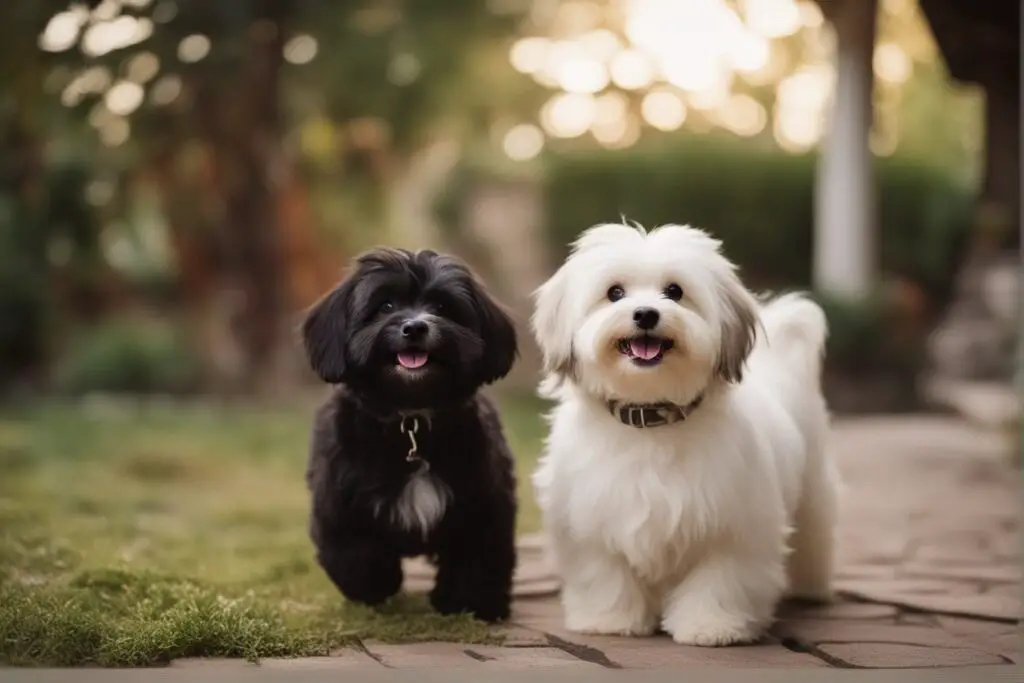
So when choosing your new BFF, don’t just pick your favorite color! Tempting as those chocolatey brown curls or creamy whites may be, focus on overall health and personality fit. Because no matter what shade their fluffy coat ends up, a good-natured Hav brings color to your life in the most important ways!
Table of Contents
- 1 Genetics and Havanese Dog Colors
- 2 Popular Havanese Coat Colors
- 3 A rarity in Havanese Colors
- 4 The Unique Silver Markings Trait
- 5 Color Transformations in Havanese
- 6 Unusual Coat Patterns in Havanese
- 7 Wrapping Up on Havanese Colors
- 7.1 Does the color of a Havanese puppy change as it grows?
- 7.2 Are specific colors of Havanese dogs more expensive?
- 7.3 What is the most common color for a Havanese dog?
- 7.4 Can two Havanese dogs with the same coat color produce puppies with different colors?
- 7.5 Do different colored Havaneses have different temperaments?
- 8 Related posts:
- 9 5 Essential Training Tips for Your New Havanese Puppy
- 10 Havanese Puppy Guide: Breed Info, Care Tips & More!
- 11 Unveiling the Havanese Temperament: Key Facts & Traits
- 12 25 Happy Havanese Puppies
Genetics and Havanese Dog Colors
Canine Color Genetics 101
Like humans, a dog’s coat color is determined by its genes. The breed of the dog plays a significant role in this. In the case of Havanese dogs, specific genes influence their coat color.
- Dominant Genes: These are the bossy ones. If a dominant gene is present, it’ll express itself.
- Recessive Genes: These are shy guys. They only show up when no dominant gene overshadows them.
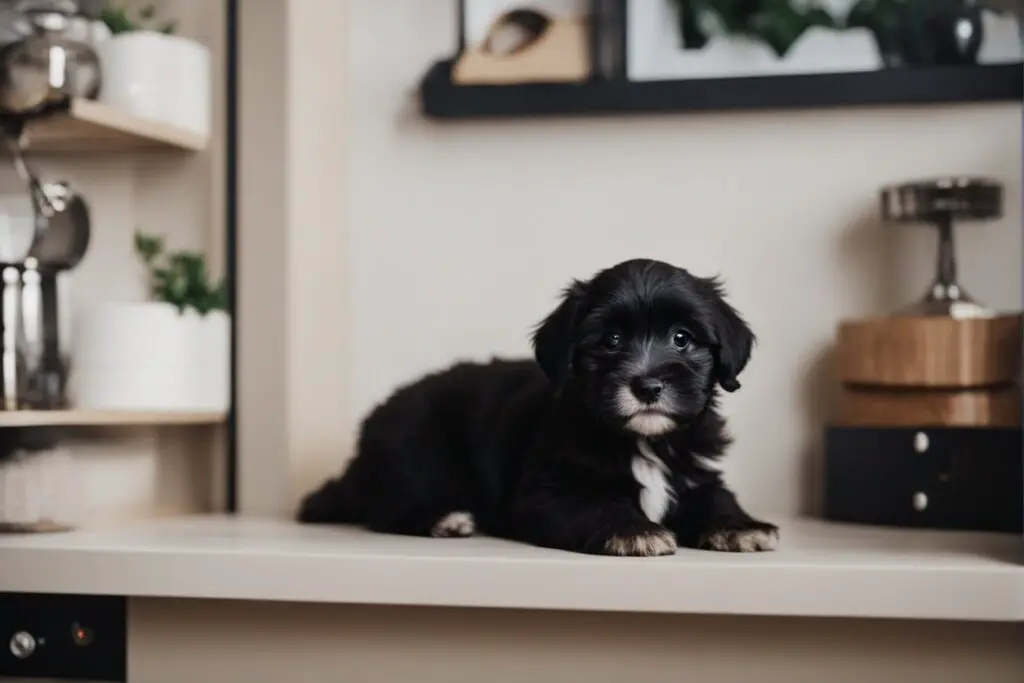
The gold Havanese, for example, gets its unique hue from a combination of these genes.
How Genes Influence Havanese Colors
Havanese dogs stand out with their diverse palette in dog breeds. But how does that happen?
- Gene BB or Bb: Makes black pigment
- Gene bb: No black pigment; allows red/yellow to show up
So, if you see a gold Havanese prancing around, you know it’s got ‘bb’ working behind those golden locks!
Dominance Game in Coat Colors
Remember our dominant and recessive buddies? Here’s how they play out in determining coat colors:
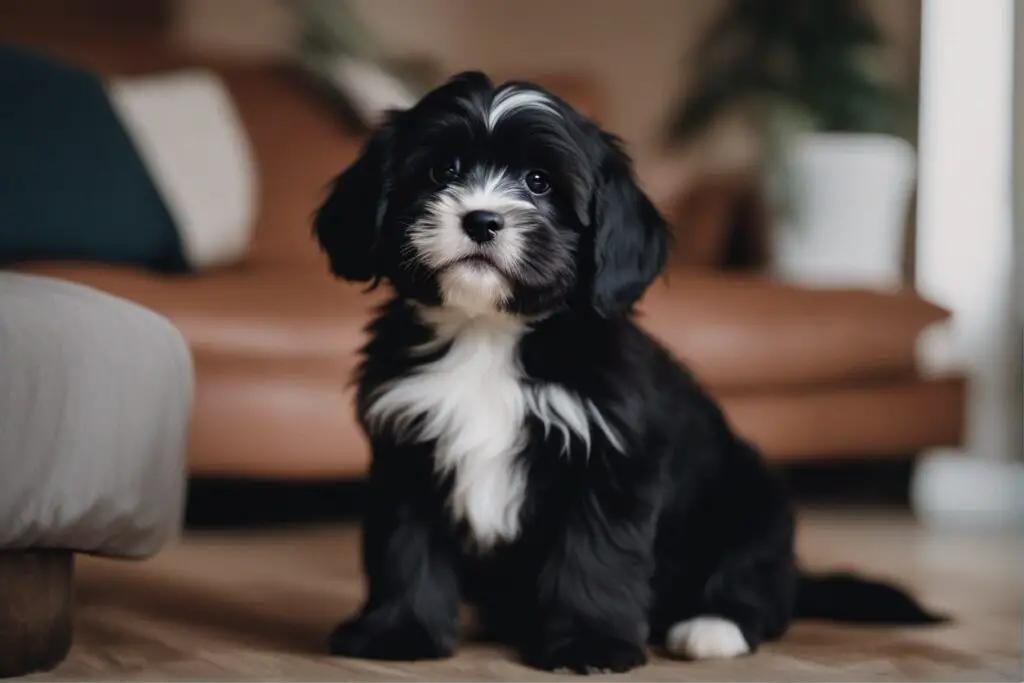
- Black (B) is dominant over brown (b)
- Dense pigment (D) is dominant over dilute pigment (d)
If your cute little furball has one B gene from either parent, it’ll sport a black coat despite having other ‘b’ or ‘d’ genes.
Now that you’ve decoded the mystery behind those beautiful Havanese colors remember – whether your canine buddy sports an AKC champion black or an adorable gold coat – all that matters is the love they shower on you!
Popular Havanese Coat Colors
The Havanese breed flaunts a variety of coat colors. Here are the top picks:
- Black: A classic, always in style.
- White: Purity and elegance combined.
- Sable: For those who fancy a bit of drama.
These colors have been all the rage among pet owners lately. It’s like everyone wants to show off their fashionable fur baby!
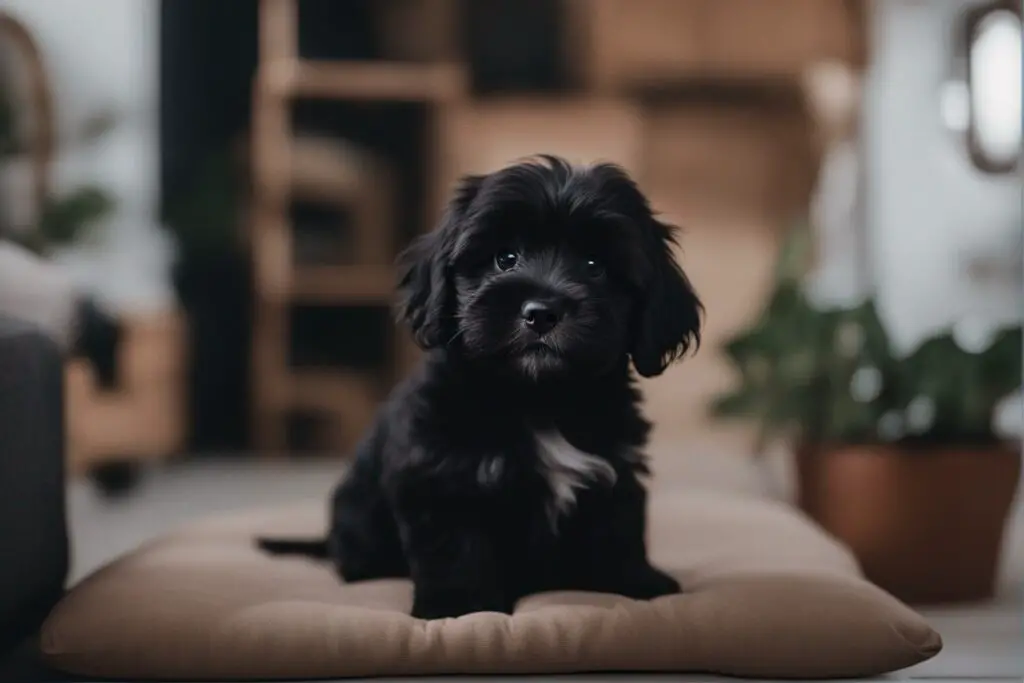
But what about health correlations? No concrete evidence links specific coat colors with health issues in this breed. So, feel free to pick your favorite color without any worries.
To sum up, whether you’re into monochromatic black or pristine white or even a daring sable, there’s a Havanese out there for you. And guess what? They’re all healthy as can be!
A rarity in Havanese Colors
Uncommon Coat Colors
Havanese dogs are known for their wide range of coat colors. However, certain shades are less common than others. These include:
- Pure black
- Silver
- Cream
- Blue
These rare hues result from specific genetic combinations, making them less likely to occur.
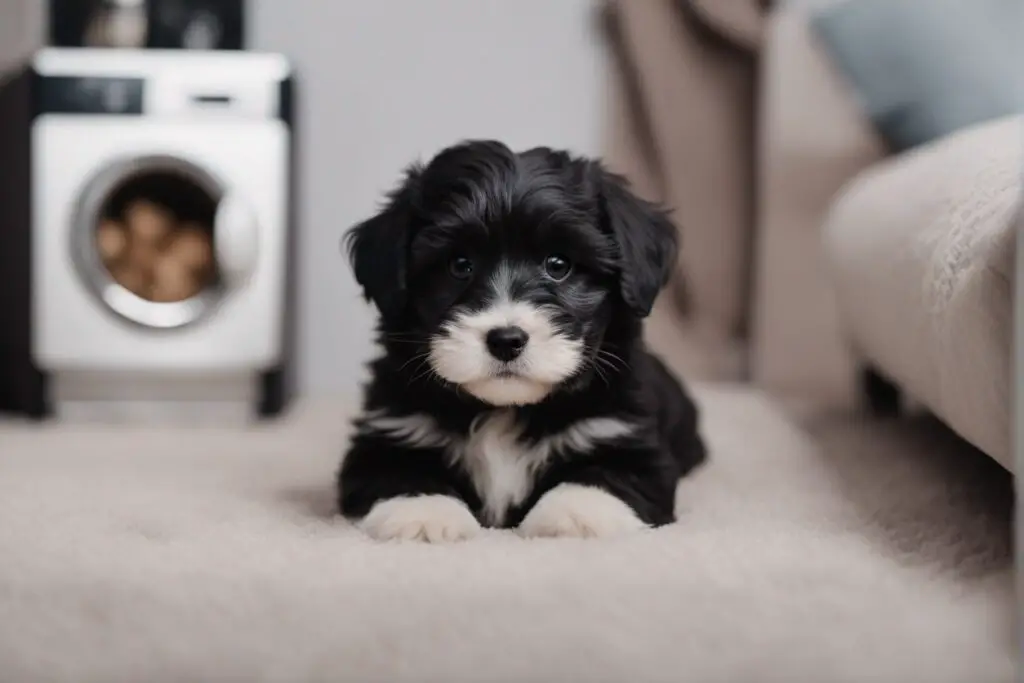
Behind the Rarity
Why do some colors pop up less often? It’s all about genetics and breeding practices. Specific color genes are recessive, meaning both parents must carry the gene for it to appear in puppies. Breeders may favor more common colors, leading to fewer dogs with rare coats.
Value and Desirability
Things get interesting here: these uncommon colors can increase a dog’s value. Due to its rarity, a blue or silver Havanese might fetch a higher price. But remember, color doesn’t affect a dog’s personality or health! So while you might be drawn to these unique shades, don’t let color dictate your choice of pet.
The Unique Silver Markings Trait
Silver markings on a Havanese dog’s coat are quite the spectacle. They’re not just patches or spots but an intricate array of silver colors, sometimes mixed with speckles of tan markings or stripes.
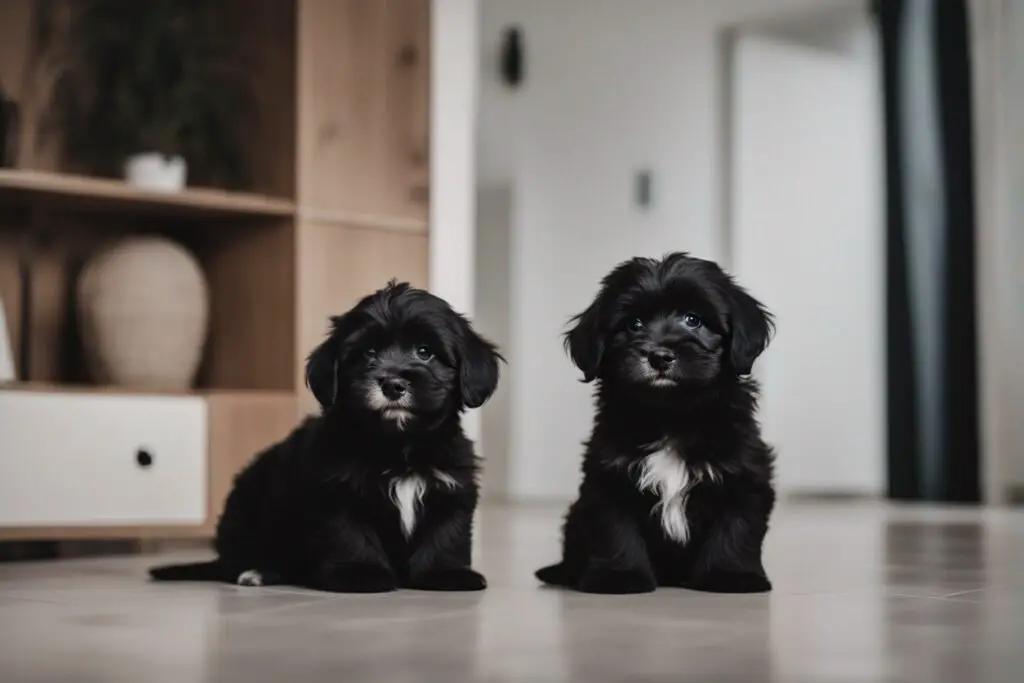
Genetics Behind Silver Markings
The gene responsible for these marking variations is a complex one. It’s not as simple as a brindle gene causing stripes or a white trim gene causing white markings. Instead, it’s like an artist’s palette with shades ranging from golden yellow to cream markings.
- Some dogs might have large swaths of silver.
- Others might have tiny speckles scattered across their body.
- A few may even exhibit a variation where they have large and small silver patches interspersed with areas of gold or tan.
This genetic diversity is what makes each Havanese unique in their own right!
Health and Temperament Influence
Now you might wonder – does this silver marking trait influence the health or temperament of your Havanese? Well, there isn’t any concrete evidence to suggest that the color variants affect either aspect.
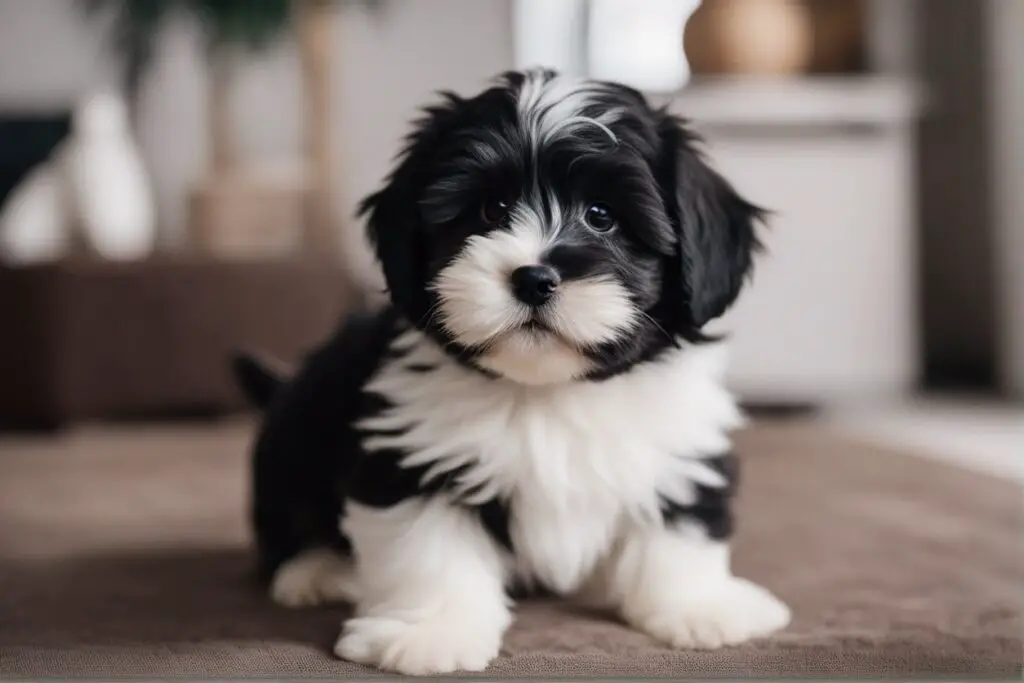
Whether your Havanese has white patches, gold spots, or striking silver markings, they’ll still be the same lovable companion!
Color Transformations in Havanese
Have you ever noticed how a Havanese puppy’s coat color changes as they grow? It’s a fascinating process.
Puppy to Adult Coat Change
Havanese are born with their puppy coats, which often show different color types from their eventual adult coats. The transformation usually starts around 4-6 months and can continue until they’re about a year old.
- At birth, the coat may have deep, vibrant colors.
- By six months, these colors might start to fade or change.
- Around one year old, the adult coat emerges with its final hue.
These changes aren’t just for show – they’re part of the breed’s unique genetic makeup.
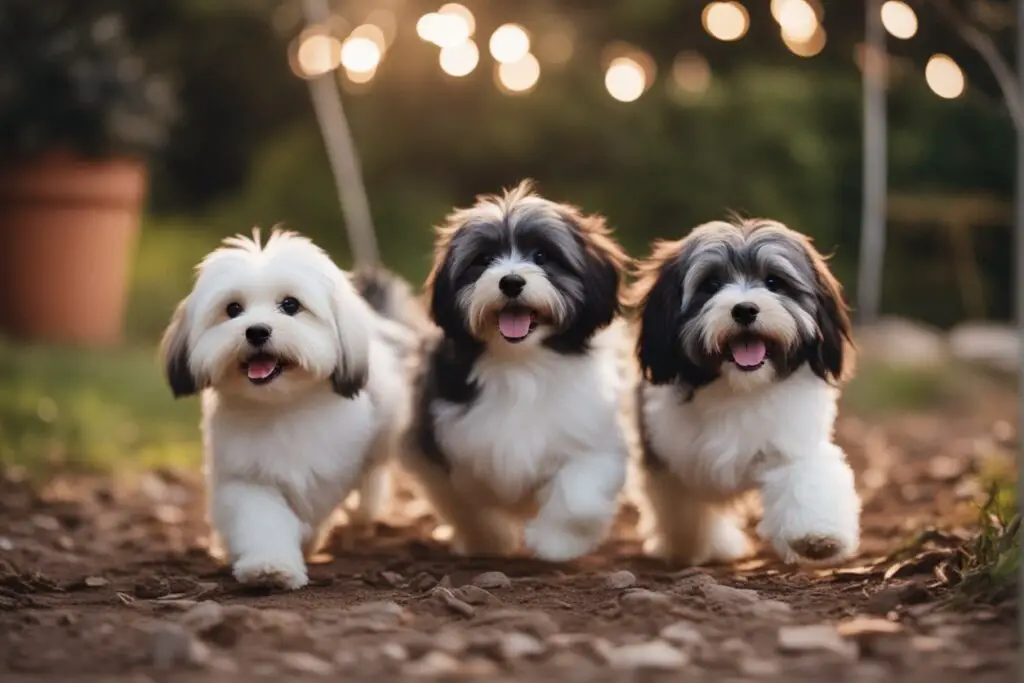
Why the Color Change?
The reason behind this lies in the genes responsible for coat color and how they interact with each other. Some genes have “yellow undertones,” causing the coat to lighten over time.
Health Implications
Are there any health concerns related to these color changes? Generally speaking, nope! Dramatic color transformations are regular for Havaneses and don’t indicate any health problems. However, sudden changes in an adult dog’s coat could signal underlying issues and should be checked by a vet.
So next time you see a Havanese pup, remember – they’re not just changing size as they grow up but transforming their wardrobe too!
Unusual Coat Patterns in Havanese
Brindle and Piebald Spots
Have you ever spotted a Havanese with a mottled coat? That’s not your everyday sight. Some Havanese dogs sport unusual patterns on their fur, like brindle or piebald spots. These aren’t your run-of-the-mill black coat or black coats.
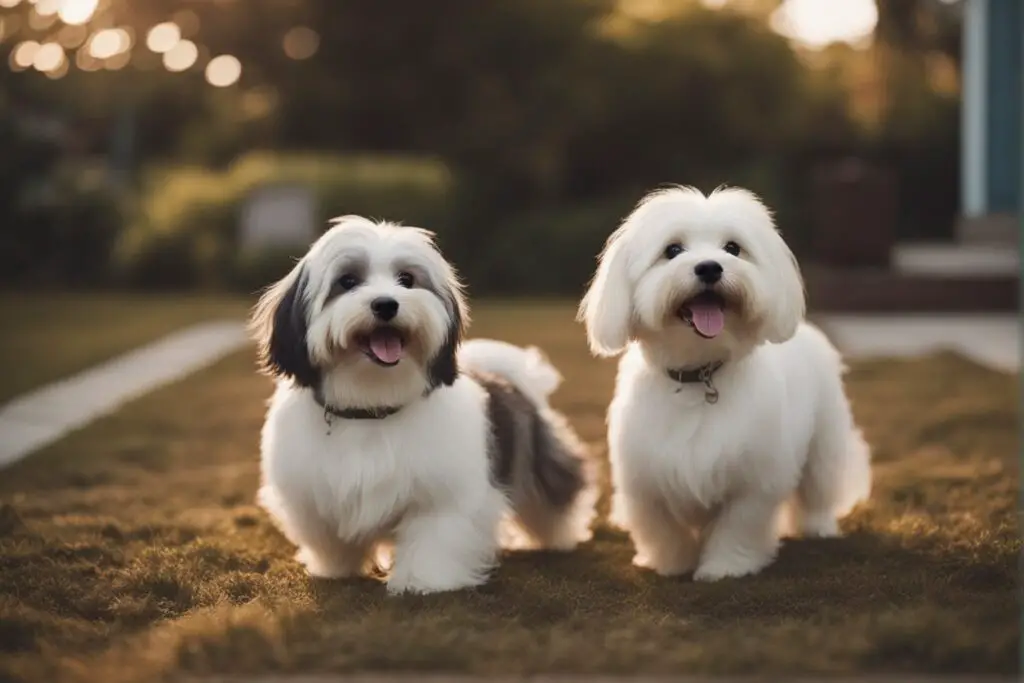
- Brindle: Dark streaks running over a lighter base color.
- Piebald: Large, irregular patches of two colors.
The Science Behind the Spots
You might wonder, “What causes these funky patterns?” It’s all in the genes, my friend. Genetic factors significantly influence how these unique patterns form on their coat. It isn’t just about what meets the eye; it’s science doing its magic!
Impact on Appearance and Breed Standards
You’re probably thinking, “Do these patterns affect how my dog looks?” You bet! A pattern can change your pup’s look from its paws to its tail. But here’s the kicker – while they add a unique flair to your furry friend, not all are accepted within breed standards. So if you’re thinking show dog status, better check those guidelines first!
So there you have it – a quick dive into the world of unusual Havanese coat patterns. Remember, whether your Havanese has a plain Jane coat or sports funky spots – they’re all unique!
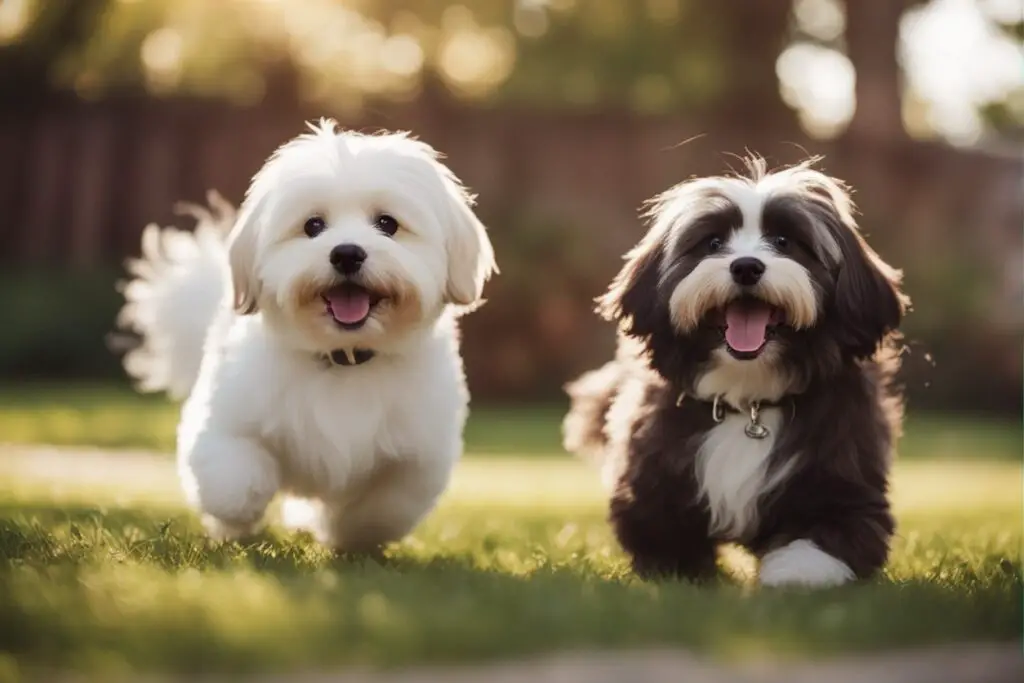
Wrapping Up on Havanese Colors
So, there you have it! The lowdown on the vibrant world of Havanese colors. From their genetic makeup to their unique silver markings and color transformations – these pups are a true spectacle of nature’s paintbrush. Remember, every Havanese is unique, no matter the coat color or pattern, So whether your furry friend sports a common hue or flaunts an unusual design, they’re all stunners!
Ready to welcome one of these colorful furballs into your life? Go ahead! Embrace the diversity and make your pick. Don’t forget choosing your favorite color is just part of the fun journey of owning a Havanese. After all, it’s not just about looks – it’s about finding the perfect companion who will enjoy your life.
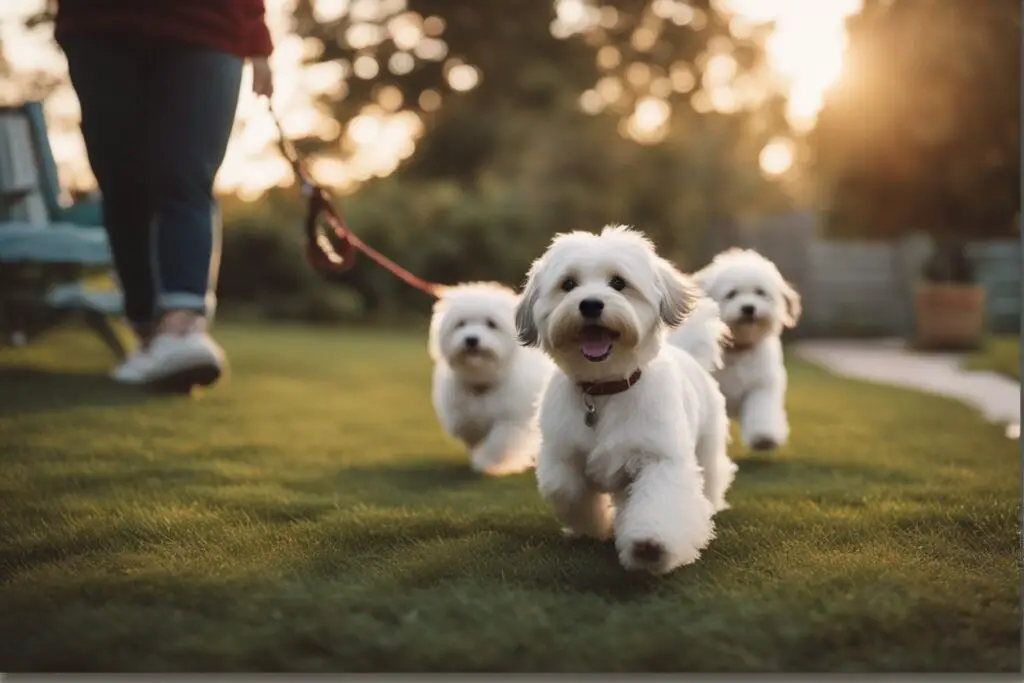
Does the color of a Havanese puppy change as it grows?
Yes, many Havanese puppies undergo color transformations as they grow older. This is due to the ‘progressive graying’ gene many Havaneses carry.
Are specific colors of Havanese dogs more expensive?
Not really. The price of a Havanese dog depends more on factors like pedigree, breeder reputation, and location rather than color.
What is the most common color for a Havanese dog?
The most common colors for Havanese are black and white, although they come in many other colors too.
Can two Havanese dogs with the same coat color produce puppies with different colors?
Yes! Multiple genes determine coat color in dogs, so their offspring might differ even if both parents have the same coat color.
Do different colored Havaneses have different temperaments?
Nope! Color doesn’t influence temperament in Havaneses – or any breed, for that matter.